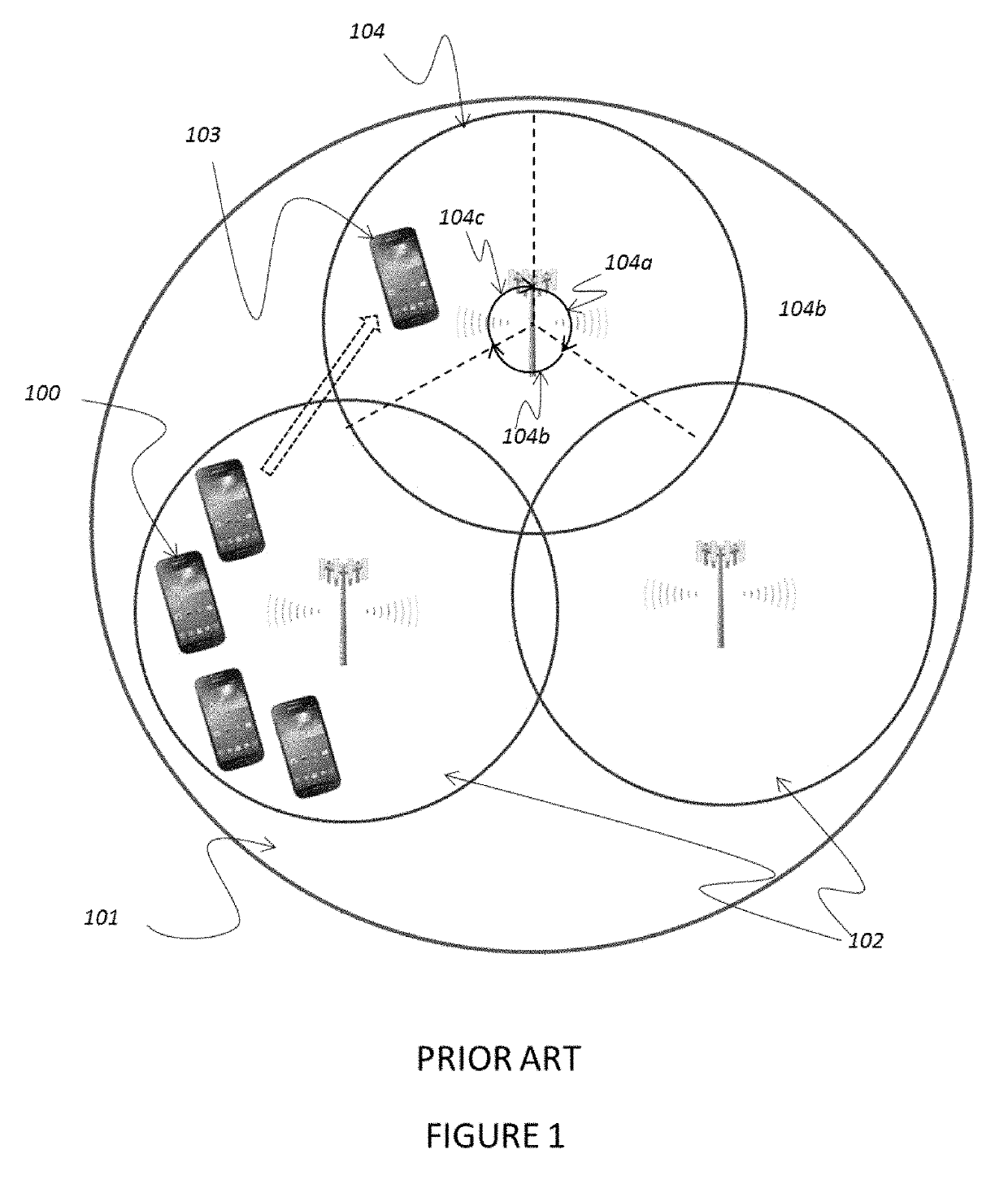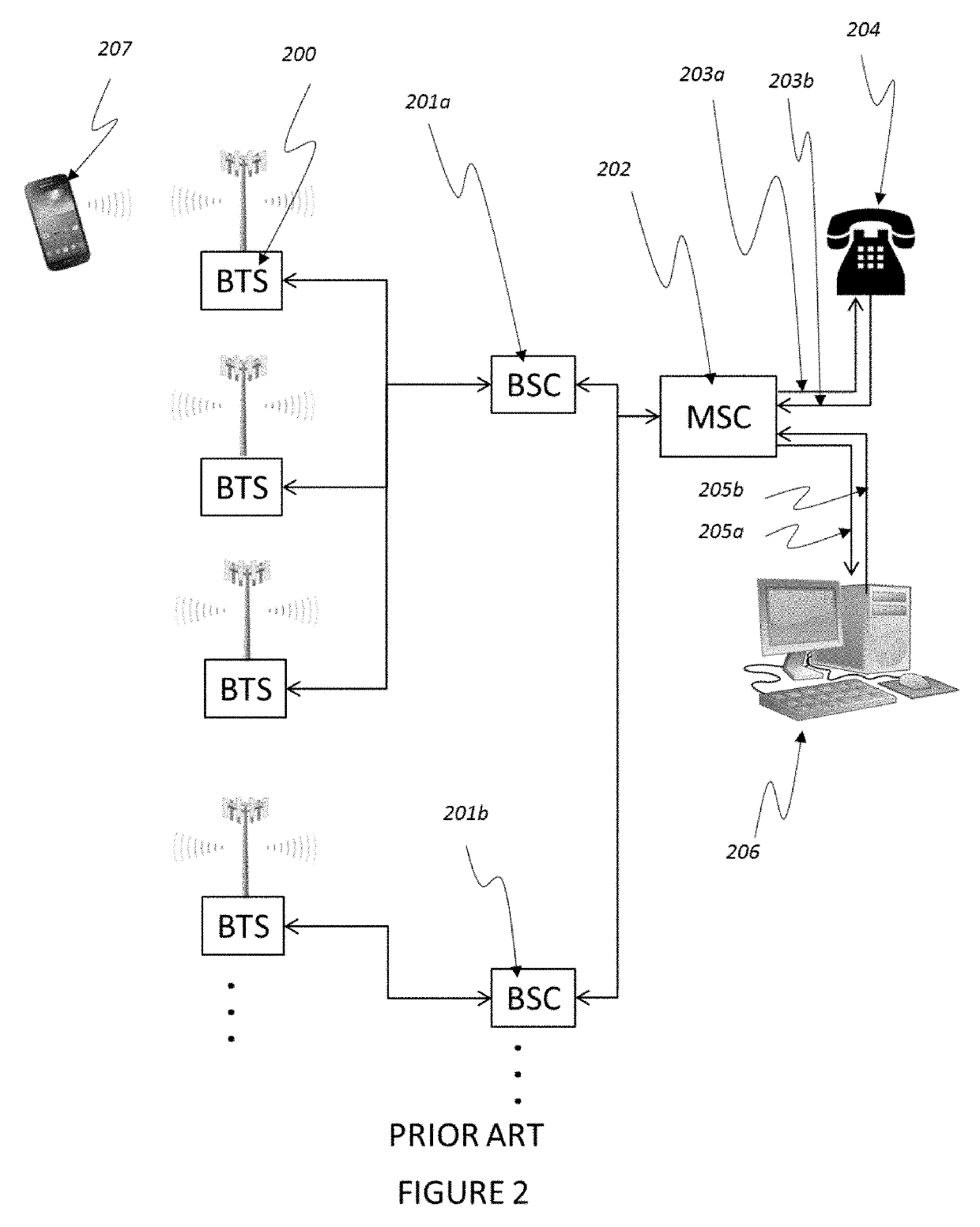System for estimating wireless network load and proactively adjusting applications to minimize wireless network overload probability and maximize successful application operation
a wireless network and wireless network technology, applied in the field of wireless communication, can solve the problems of reducing the capacity of local wireless network equipment and local servicing capabilities, reducing the load on the wireless network, and facilitating communication. to achieve the effect of maximizing the potential for transmission, reducing the load on the wireless network, and facilitating communication
- Summary
- Abstract
- Description
- Claims
- Application Information
AI Technical Summary
Benefits of technology
Problems solved by technology
Method used
Image
Examples
Embodiment Construction
[0054]Referring to FIG. 7, the present invention is embodied in a system which consists of a wireless network provider with equipment (701) providing a wireless two-way connection from a fixed transceiver (700) to mobile devices which are either SmartPhone-type mobile devices (710) or purpose-built SmartThings-type mobile devices (711) which can run both application software (712) which is either pre-loaded at manufacture or downloaded after manufacture, as well as special sub-application software, firmware or hardware or a combination of the three (734), which is called Wireless Load Discovery Software and Hardware. The mobile devices are connected to a server (702) via the wireless network equipment (700, 701) so that upload (706) and download (707) connections may be created, which may be one-and-the-same physical connection between the server and the wireless network equipment over the internet or a private network connection. Application software on the server (703) acts to con...
PUM
 Login to View More
Login to View More Abstract
Description
Claims
Application Information
 Login to View More
Login to View More - R&D
- Intellectual Property
- Life Sciences
- Materials
- Tech Scout
- Unparalleled Data Quality
- Higher Quality Content
- 60% Fewer Hallucinations
Browse by: Latest US Patents, China's latest patents, Technical Efficacy Thesaurus, Application Domain, Technology Topic, Popular Technical Reports.
© 2025 PatSnap. All rights reserved.Legal|Privacy policy|Modern Slavery Act Transparency Statement|Sitemap|About US| Contact US: help@patsnap.com



